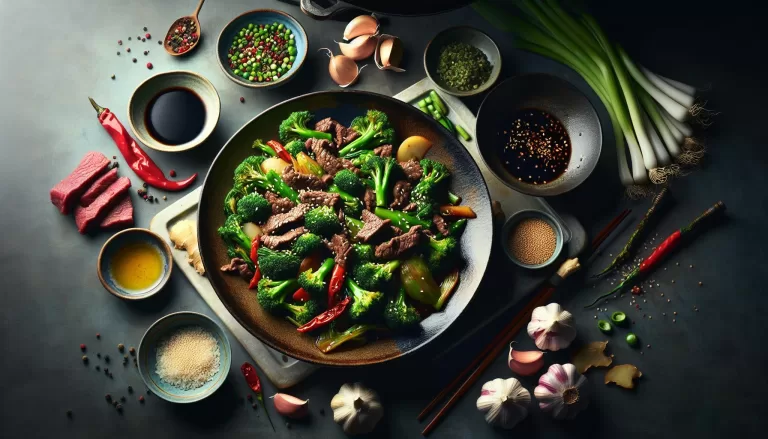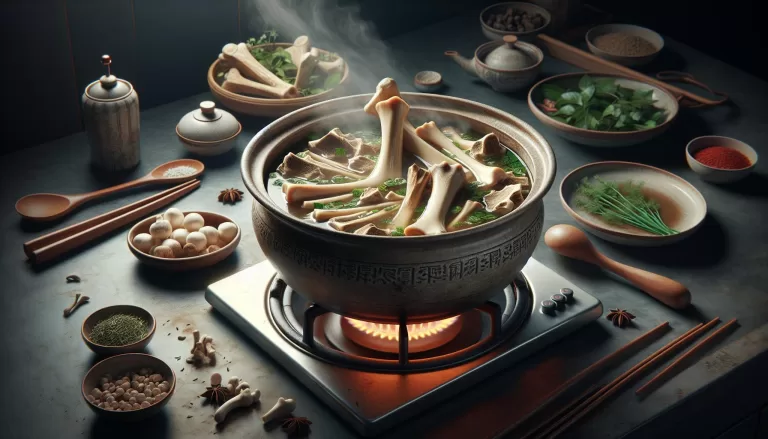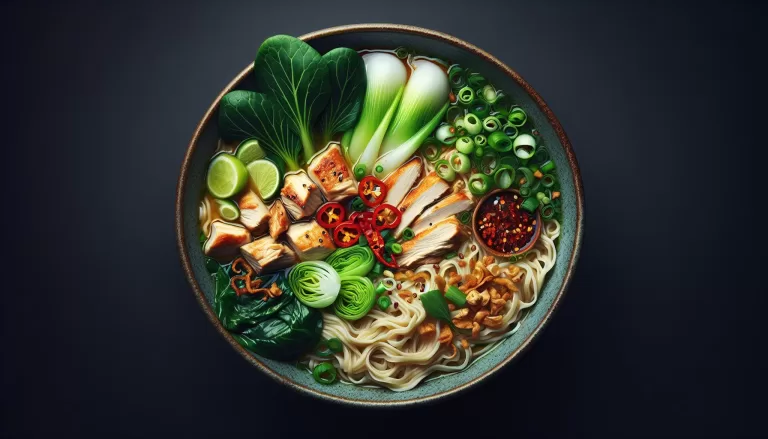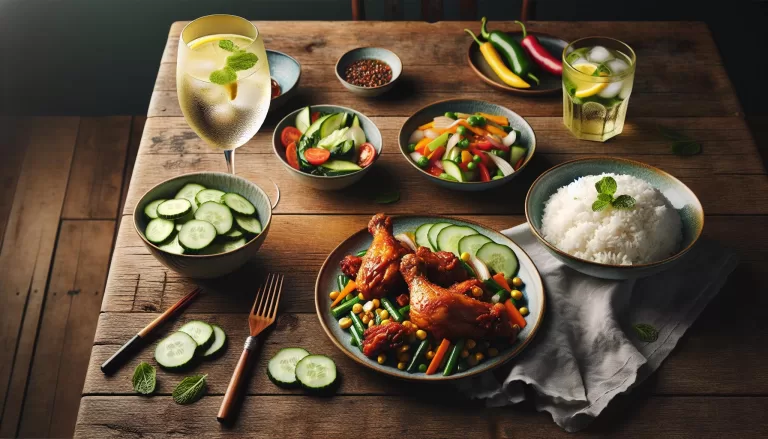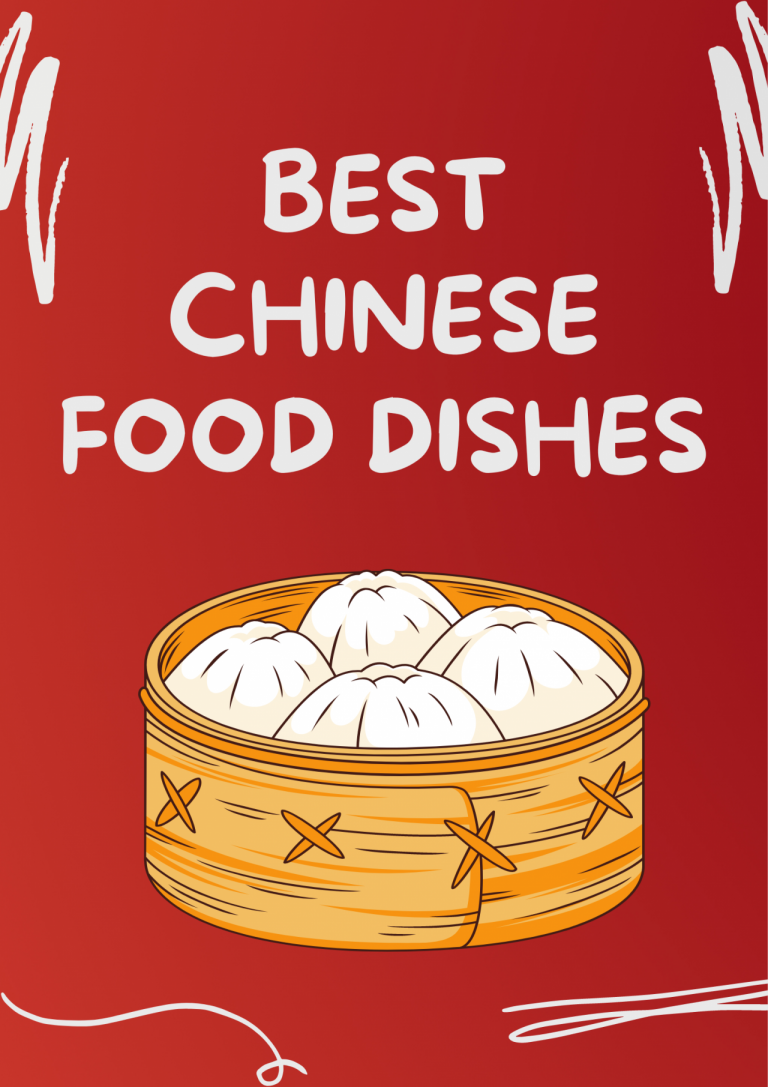Master the Perfect Homemade Yu Choy Recipe with Fresh Local Ingredients and Unique Spices
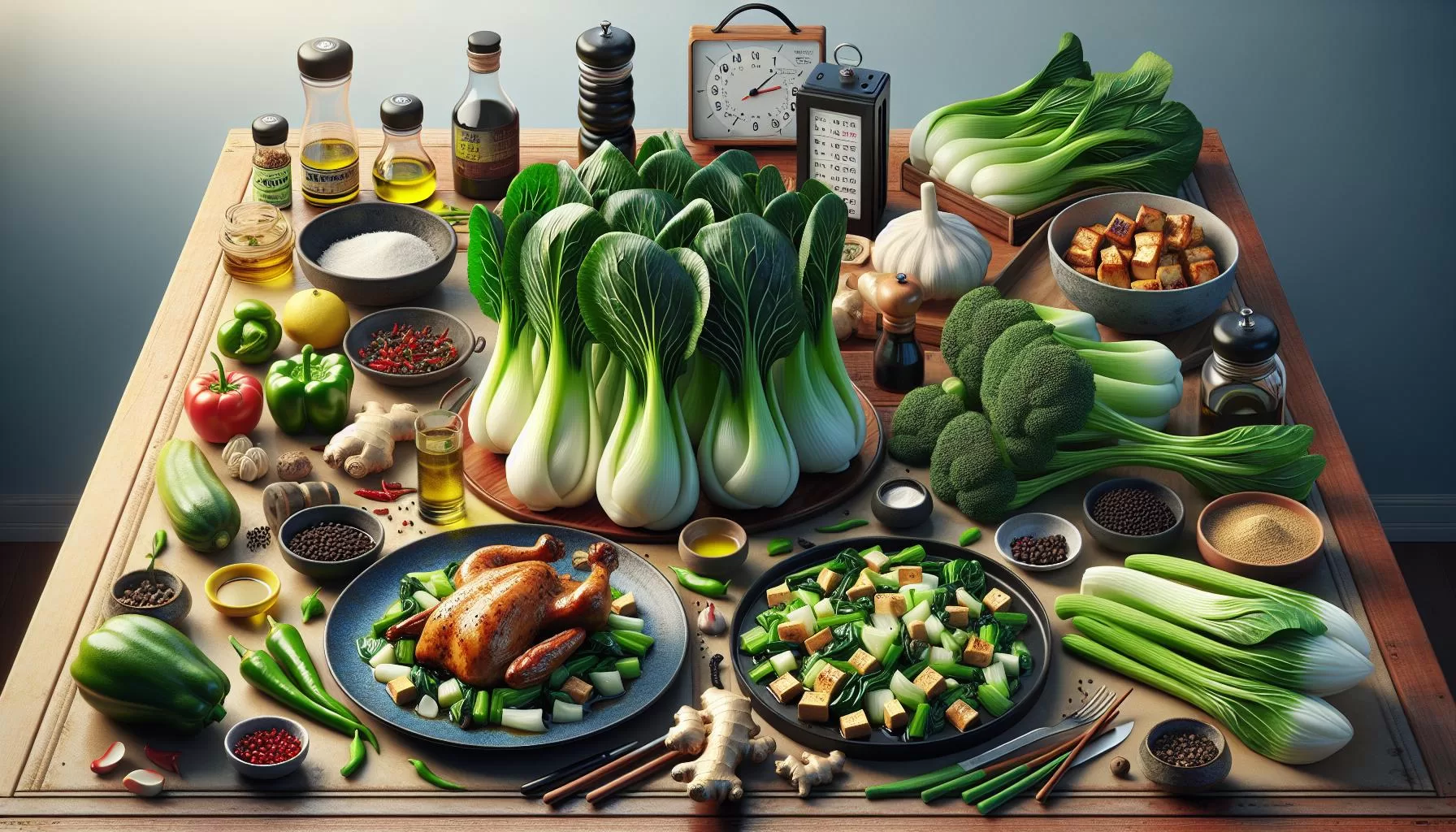
Health Benefits of Yu Choy
Boost Your Vitamin Intake
As you dive into making this Yu Choy recipe, know that you’re whipping up a nutrient-dense meal full of essential vitamins. Yu Choy ranks high in vitamins A, C, and K. As you probably know, vitamin A supports healthy vision while vitamin C plays key roles in immune function and bone health. Most people aren’t aware of the benefits of vitamin K. This vitamin aids in blood clotting and keeps your bones robust.
Here’s a quick breakdown:
| Vitamin | Benefit |
|---|---|
| A | Supports healthy vision |
| C | Boosts immune function, enhances bone health |
| K | Aids in blood clotting, strengthens bones |
Low In Calories, High In Flavor
If you’re tracking your calorie intake, you’ll love Yu Choy. It’s an impressively low-calorie vegetable that doesn’t skimp on flavor. Incorporating it into your meals provides a surefire way to keep your dishes flavor-packed without loading them with additional calories.
Packed With Fiber
In addition to the vitamin bounty, Yu Choy provides a substantial amount of dietary fiber. Regular consumption of fibrous foods aids in digestion and plays a part in maintaining your overall gut health.
Consider Its Minerals
You can’t overlook the rich ration of essential minerals that Yu Choy brings to your dish. Abounding in calcium, iron, and potassium, it supports your body’s many functions from strengthening bones to maintaining heart health.
Here’s a snapshot of these minerals and their benefits:
| Mineral | Benefit |
|---|---|
| Calcium | Contributes to bone health |
| Iron | Assists in blood cell formation and enhances oxygen transportation |
| Potassium | Supports heart health and regulates blood pressure |
As you cook your homemade yu choy recipe, you are not just making an ordinary dish. You’re creating a flavorful and nutritious meal packed with essential vitamins, minerals, and dietary fiber.
Ingredients You’ll Need

For a nutritious, flavorful Yu Choy dish, it’s important to gather the right elements. Let’s dive into the specific items you’ll need.
One of the key ingredients, of course, will be Yu Choy. Aim for about 1 lb, fresh from your local farmer’s market. This leafy green is the heart of the dish, boasting high vitamin content and essential minerals as discussed in our previous section.
You’d also require garlic cloves, preferably 3-4 for a robust flavor that marries well with the Yu Choy.
To enhance the taste, include light soy sauce (2 tablespoons). You may choose a low-sodium version if you’re conscious about salt intake.
For a sweet and spicy kick, have oyster sauce (1 tablespoon) and red chili flakes (1/2 teaspoon) on your list. If you’re not a fan of heat, you can skip the chili flakes.
A generous dash of black pepper will do the magic, injecting a punch of flavor to the mix. You can adjust the amount according to your preference.
Let’s not forget a tablespoon of canola oil (or any other vegetable oil) for stir-frying the Yu Choy.
Another less commonly used but surprisingly compatible ingredient is sesame oil (1/2 teaspoon). This will give your dish a unique, nutty undertone.
| Ingredients | Quantity |
|---|---|
| Yu Choy | 1 lb |
| Garlic Cloves | 3-4 |
| Light Soy Sauce | 2 tbsp |
| Oyster Sauce | 1 tbsp |
| Red Chili Flakes | 1/2 tsp |
| Black Pepper | To taste |
| Canola Oil | 1 tbsp |
| Sesame Oil | 1/2 tsp |
In the next section, we’ll delve into the step by step method to stir up this Yu Choy masterpiece. You’re in for a treat, and your body will thank you for this nutrient-filled delicacy.
Step-by-Step Cooking Instructions

With your ingredients at the ready, it’s now time to create your nutritious, tasty Yu Choy dish. Let’s dive into the step-by-step cooking instructions.
- First, give your Yu Choy a good wash. Make sure to remove any dirt or grit that might be lingering on the leaves.
- Heat a skillet over a medium flame and add a tablespoon of Canola oil. Allow it to heat up for a couple of minutes—just don’t let it smoke!
- Once the oil’s hot, throw in your peeled garlic cloves. Sauté them till they’re golden-brown, but be careful not to burn them. Burnt garlic can leave a bitter taste in your dish.
- Remove the golden garlic and set it aside. You’ll be adding it back in later for an extra kick of flavor.
- It’s time for the star of the show: Yu Choy. Add your cleaned greens to the same skillet. You might hear a sizzle—that’s exactly what we want.
- Spices are next in line. Sprinkle in red chili flakes, lightly crushed black pepper, and a pinch of salt. Stir well to ensure the spices coat your greens evenly.
- Pour in your light soy sauce and oyster sauce. Stir well again. Your Yu Choy will begin to take on a glimmering sheen.
- After you’ve given the ingredients a good mix, cover your skillet with a lid. Allow the greens to soften in the steaming heat, about 3-5 minutes should do.
- Once soft, drizzle with the sesame oil and the set-aside golden garlic for that extra memorable flavor hit.
- Give everything one last good mix, and voila! Your Yu Choy is now ready to serve.
Here’s a bonus tip: if you favor a little more heat, feel free to boost your red chili flakes. Or, if you’re avoiding soy, coconut aminos make a great substitute for light soy sauce.
Now all that’s left is to enjoy your creation.
Tips for Perfecting Your Yu Choy Dish

Fine-tuning a recipe is part art, part science. Your Yu Choy dish demands nothing less. As you dive into this cooking venture, consider these tips to truly make it your own.
First, attention to ingredient quality is a must. Sure, the supermarket’s produce section is convenient. But those Yu Choy leaves from a local farmer’s market? You’ll taste the difference. While there, score some fresh garlic too. Trust us, the extra effort is worth it.
And let’s talk about oil. Canola oil is a great choice when working with high heat. It’s versatile and neutral in taste, highlighting rather than hijacking your dish’s flavor. However, feel free to experiment with alternatives like avocado or grapeseed oil. These stable, high-smoke-point oils might just elevate your Yu Choy to new levels of gastronomic greatness.
Next, explore the world of soy sauce alternatives. Believe it or not, coconut aminos can stand in for your typical soy sauce. It’s a delicious, soy-free, gluten-free alternative that brings a complexity of flavor to your Yu Choy while keeping things healthy.
On the heat side, you’ve got options too. Sure, chili flakes provide a satisfying kick. But have you tried Szechuan peppercorns? It’s a tongue-tingling, aromatic spice that can give your Yu Choy a distinctive twist. Don’t shy away from trying new ingredients. That’s how kitchen magic happens, after all.
Remember, fresh is best when it comes to spices as well. That jar of ginger powder in your pantry has a place, but the fresh stuff? It’s a game-changer. Freshly ground black pepper too, can transform your dish, releasing aromatic oils that pre-ground pepper simply lacks.
Finally, cooking is like dancing – timing is everything. Paying precise attention to your cooking times ensures your Yu Choy retains its vibrant color and vital nutrients. Consider investing in a kitchen timer if you don’t already own one. It’ll become your faithful sidekick in culinary adventures.
Serving and Enjoying Your Homemade Yu Choy

Now that you’ve mastered the art of cooking Yu Choy, it’s time to add the finishing touches to your dish before serving. Here’s where you can let your creativity shine. Make it aesthetically pleasing and more appealing to the taste buds.
Presentation is key when delivering a home-cooked meal. Consider arranging the vibrant Yu Choy on a decorative plate or in a beautiful bowl. A garnish of sesame seeds or freshly sliced chilies can add a splash of color and a kick of flavor respectively.
Serving Yu Choy straight from the stovetop is optimal. However, if necessary, keeping it in a warm oven ensures the dish retains its heat till it’s time to dig in. It’s important to avoid reheating as it can diminish the vibrant green color and might also affect the texture and taste.
Pair your Yu Choy with a protein of your choice. Some popular options include:
- Grilled Tofu
- Stir-Fried Shrimp
- Roasted Chicken
This versatile dish also pairs wonderfully with various grains. Think outside the box – try quinoa, millet or freekeh instead of the usual rice. The nuttiness of these grains complements the slight bitterness of Yu Choy.
The essence of enjoying homemade Yu Choy is not just in the taste, but the nutritional payoff. Loaded with vitamins A, C, and K, this leafy green is a power-packed addition to your meal. The table below represents the nutritional breakdown per 100g of cooked Yu Choy.
| Nutrient | Amount |
|---|---|
| Calories | 23 cal |
| Carbs | 2.64 g |
| Protein | 1.53 g |
| Fat | 0.26 g |
| Vitamins A, C, K | High |
Lastly, sharing this delightful dish brings a sense of joy and fulfillment not found in solo meals. Gather your people, set the table and relish this homemade Yu Choy.
Conclusion
So, you’ve got all you need to whip up a delectable Yu Choy dish right in your kitchen. Remember, it’s all about the quality of ingredients, the right oils, and the perfect timing. Don’t hesitate to play around with spices like Szechuan peppercorns, and always opt for fresh ingredients. Your kitchen timer will be your best friend, helping you retain that vibrant color and nutrient content. And once you’ve aced the cooking, think about how you’ll serve it. Pair your Yu Choy with grilled tofu, stir-fried shrimp, or even roasted chicken. Want to switch things up? Try serving it with quinoa or millet. Not only will you be treating your taste buds, but you’ll also be loading up on vitamins A, C, and K. Above all, enjoy the process and share this nutritious, flavorful dish with your loved ones for a truly fulfilling dining experience.

